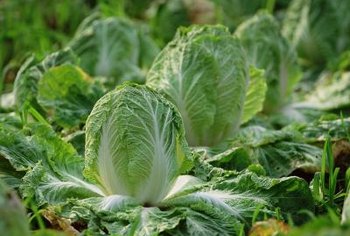Many plants need nitrogen fertilizer. Though soil often has nitrogen and other major nutrients, it's not always enough to support long-term, healthy plant growth. Most fertilizers contain the three main nutrients of nitrogen, phosphorus and potassium, with nitrogen having a specific role in plant development. And for plants that don't need as much phosphorus and potassium as they do nitrogen, you can apply a nitrogen fertilizer that supplies them with the nutrient they need.
Effects on Plant Growth
When applied to garden soil, nitrogen supports plants' rapid growth and encourages the healthy development of foliage and fruit. This makes nitrogen fertilizer especially appropriate for young plants that need to grow rapidly as they establish themselves in the soil. Lawns also require a high-nitrogen fertilizer, as they have green growth but no flowers.
Types of Nitrogen Fertilizer
Fertilizer must provide nitrogen in one of two forms: ammonium nitrogen or nitrate nitrogen. Because ammonium nitrogen has a positive charge, soil particles are able to absorb it. Warm soil temperatures above 50 degrees F convert the ammonium to nitrate within a month of application. This makes reapplication at different times of the year necessary for some plants because nitrate does not latch onto soil particles and is susceptible to being leached from the dirt. Leaching refers to water flushing nutrients deeper into the soil until plant roots can no longer reach them.
Urea Nitrogen When nitrogen is applied to the soil as urea, it sets off a series of reactions. First, enzymes in the soil transform the urea nitrogen to ammonia nitrogen, which reacts with soil to become ammonium nitrogen. The soil's microorganisms then convert the ammonium into nitrate nitrogen. Unless cold weather slows down the conversions, this process takes two to four days on average. Once it becomes nitrate, it may be leached from the soil. Soil Acidity ver time, ammonium nitrogen fertilizers gradually lower the soil's pH, making it more acidic. Some types of ammonia solutions, including urea, increase a soil's pH temporarily and may burn plant roots. However, as the ammonia converts to nitrate, it forms acidic residue that makes the topsoil more acidic than the deeper soil. To prevent problems from this, you should test the top 2 inches of soil about every other year to make sure it's not too acidic for healthy plant growth; if it is, you'll need to amend the soil with limestone.

No comments:
Post a Comment